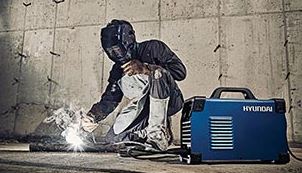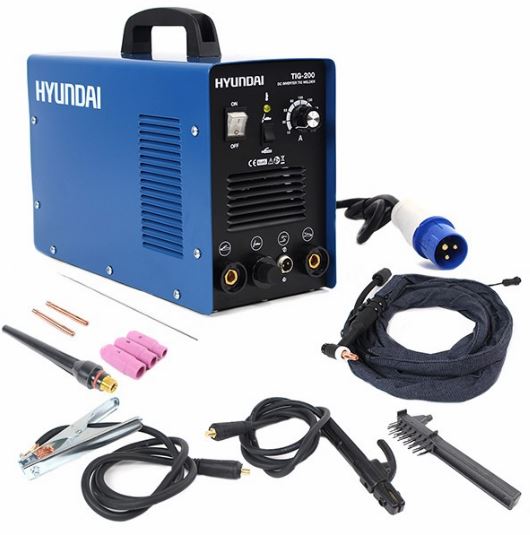Choosing a Welder : A Basic Guide

MIG Welder
MIG Welder (Metal Inert Gas): A good all-round universal welder capable of welding thin gauge sheet metal to heavy steel. It’s simple to learn and produces high quality welds with little practice.
A MIG welder uses a continually feeding spool of thin filler wire as an electrode fed by a wire feed gun to form an electric arc between a wire and the workpiece metal.

This heats the workpiece metal and the electrode, causing them to melt and join together to create the weld.
MIG welding can be either gas or gasless and each have benefits.
Gasless welding is far more portable as there’s no gas bottle to carry around, which saves cost on having to buy gas bottles and regulators, is easier on positional welds and can penetrate deeper than gas MIG.
Gas MIG welding produces much cleaner welds with no slag or spatter, is slightly better on thinner metals and the welding wire is cheaper than gasless MIG wire.
Either way, MIG welding is probably the best choice for the home and hobby market and light industrial use.
Other names for MIG welding are:
- GMAW Welding
- Gas Metal Arc Welding
- MAG Welding
- Metal Active Gas
TIG Welder
TIG Welder (Tungsten Inert Gas): TIG welding is similar to to a MIG welder as it uses an electric arc in the same way as MIG welding does but differs in a few ways.

Instead of a continuous spool of consumable wire, a TIG welder uses long tungsten welding rods that are manually slowly fed into the weld puddle to join the metal.
TIG welding requires gas, usually argon, to protect and cool the weld puddle from external contamination.
TIG welding is more suited to welding thinner materials such as stainless steel and aluminium as you can get the power down lower to reduce the risk of blow through and can even weld two dissimilar metals.
Suitable for tricky welds such as S curves, TIG welders are still capable of welding heavier materials depending on the machine.
TIG welding takes more practice than MIG welding as the process is much more manual with controlling the torch and welding rod by hand (and foot for the gas), but once mastered will produce the highest quality welds.
This makes it the better choice where perfect, precise welds are required but due to the manual process is the least productive.
Other names for TIG welding are:
- GTAW Welding Gas
- Tungsten Arc Welding
ARC Welder
ARC Welder: ARC welding is one of the oldest welding processes around. It uses either an AC or DC power supply to create an electric arc between the welding rod and the workpiece metal to melt the metals and join them together.

This style of welding is relatively inexpensive and very portable but it does require some practice to get good consistent welds and the welds will probably require some cleaning up afterwards.
ARC welding is less suited to welding thinner materials but there is a large range of specialist electrodes (welding rods) available for ARC welders depending on what materials you are welding.
ARC welding is versatile but more suited to heavier applications.
Other names for ARC welding are:
- Stick Welding
- SMAW Welding
- Shielded Metal Arc Welding
- MMA Welding
- Manual Metal Arc

